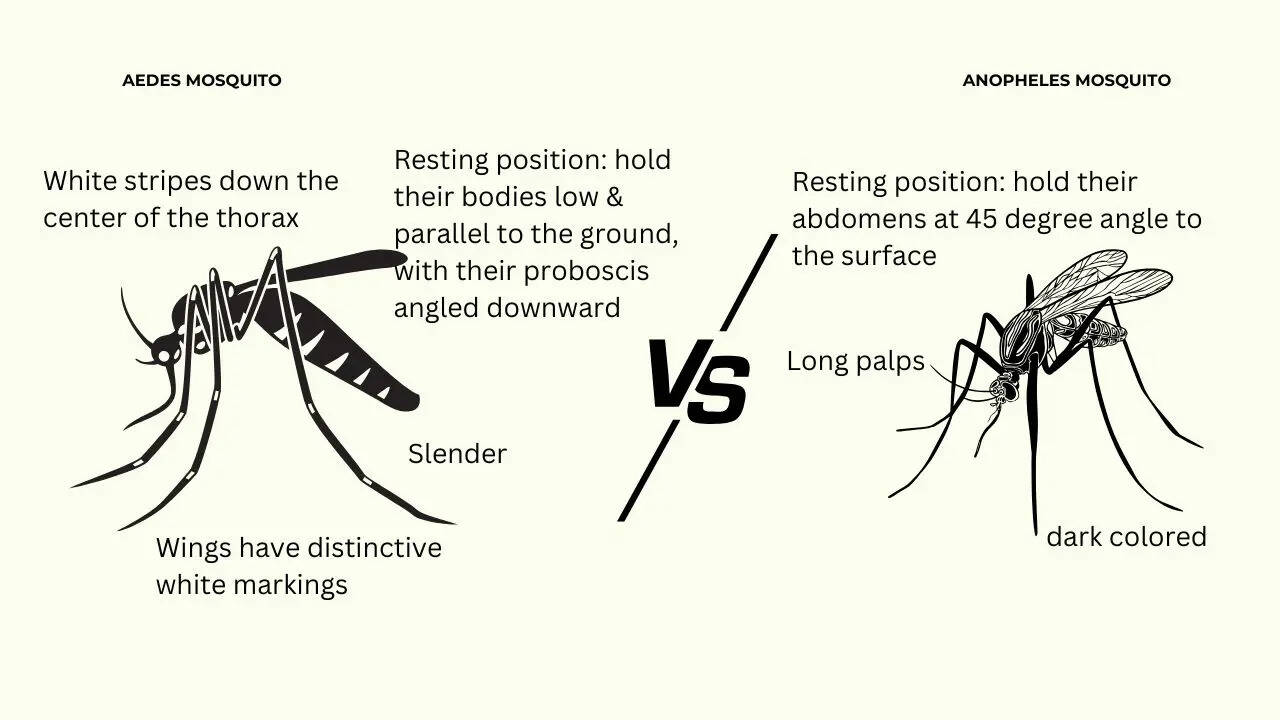- Health Conditions A-Z
- Health & Wellness
- Nutrition
- Fitness
- Health News
- Ayurveda
- Videos
- Medicine A-Z
- Parenting
- Web Stories

(Credit-Canva)
Amid Conflicting Bird Flu Reports, Parents Are Struggling To Find Reliable Information For Kids Safety
As bird flu progresses in US, parents along with other concerned citizens of the country are scrambling to get information about it. Centers of Disease Control and Prevention (CDC) explains that while the current risk is low, they are working towards bettering the situation with the help of state and monitoring people with animal exposure.
It's hard for parents to know what's really going on with bird flu. A recent survey done by University of Michigan Health C.S. Mott Children's Hospital National Poll on Children's Health showed that many parents just can't find good, trustworthy information. Parents don't know who to believe or where to look which makes them feel worried and unsure about how to keep their families safe. It is important to know the real facts, but it's tough when they find varied reports everywhere. Some parents think the news is making it sound worse than it is, while others are concerned that not enough is being done.
What Are Parents Concerned About?
Many parents are feeling lost when trying to find information about bird flu. They see different stories online and on TV, and they don't know what's true. This makes them worry because they want to protect their kids. Parents mostly rely on news reports (78%) for information, while others use social media is also a common source (31%). The rest turn to the internet (19%), family and friends (15%), government agencies (11%) and health care providers (11%) .
Parents are worried about bird flu spreading to people. They're scared that animals could give it to humans, or that people could give it to each other. They're also not sure if the government can handle a big outbreak. They don't have much confidence that the government can get rid of infected animals or food. They're also worried that they won't get clear information about recalls or how to get rid of dangerous products. They just want to feel like someone is in control.
The survey also revealed that one-third of the parents took action to protect their family against the bird flu, while 22% were being more careful about the hygiene. Of them, 13% were cautious handling eggs, chicken and other meat products, 12% avoid contact with birds, and 10% avoided raw milk.
Flu viruses can infect chicken eggs by entering through the eggshell. The eggshells are smaller than the pores of eggshells, which means viruses can enter the eggs and the egg's surface will still be protected. However, it is still important to handle it safely.
As per the US Food and Drug Administration, cooking poultry, eggs and other animal products to the proper temperature and preventing cross-contamination between raw and cooked food.
Symptoms of Bird Flu to Watch for
- Pink eye
- fever
- fatigue
- cough
- muscle aches
- sore throat
- nausea
- vomiting
- diarrhea
- study or runny nose
- shortness of breath
What Can Parents Do?
To feel safer, some parents are changing their habits. They're being extra careful about washing their hands and keeping things clean. Some are also being more careful when handling chicken and eggs, making sure they're cooked properly. Some parents are even avoiding contact with birds and wild animals, just to be safe. They're also being cautious about drinking raw milk and are eating less chicken and eggs. They are trying to be proactive.
The survey revealed that parents don't feel like they can trust the government's response to bird flu. This lack of trust makes them even more worried. When people don't know what's happening, they get scared. It's important for health officials to be open and honest about what they're doing to stop the spread of the virus. They need to give clear information about how to stay safe with food. This will help parents feel more calm and confident.

(Credit-Canva)
Reading Fiction Can Change Your Perspective And Your Mental Health
Reading non-fiction books is not my cup of tea, while they are informative and important to read, when I read for pleasure, I want to immerse myself in a world that could never be. Reading fiction books like the Harry Potter series, Percy Jackson books and others like the Dragon Rider, were the reason I enjoyed reading. Often using these books as a means to escape difficult feelings, I never even realized how reading these books transformed my mental health, along with my perspective.
Reading plays an important role for your mental health; books offer numerous advantages for one's mental well-being. Whether the preference lies with short stories or lengthy novels, colorful picture books or digital formats, various forms of literature can provide valuable benefits. This piece will explore several key reasons why reading is so beneficial for mental health.
How Does Reading Impact Mental Health?
According to a 2022 PLoS One study, reading fiction can improve people's mental well-being. The researchers conducted five different studies to see how various ways of engaging with fiction affect individuals. These methods includes recalling past fiction reading experiences, being instructed to read fiction, discussing fiction in comparison to non-fiction, and discussing different types of fiction.
The research shows that books had a positive influence on people's mood and emotions. However, it appears that simply reading fiction might not lead to an immediate improvement in mental well-being. The brain seems to require a period of processing and understanding the story before positive effects can be observed.
Ways Reading Can Affect Your Mental Health
Mental Health First Aid England, a social enterprise that offers guidance and training for mental health in workspaces, explains that whether the preference lies with short stories or lengthy novels, colorful picture books or digital formats, various forms of literature can provide valuable benefits. Here are some ways it helps us.
Reading captivating books brings joy and immersion, making time disappear. Finishing a good story can evoke sadness or eagerness for more, highlighting reading's positive impact.
Reading as a Stress Buster
Engrossing oneself in a book for just six minutes can significantly reduce stress by lowering heart rate and easing tension, outperforming other relaxation methods.
Acts as a Coping Mechanism
Reading offers an escape from the real world, providing a coping mechanism, especially in childhood. This immersion can be transformative, influencing how we interact with the world.
Building Empathy
Reading fiction enhances empathy, improving the ability to understand others' feelings and thoughts, temporarily boosting this crucial social skill.
Keeping Your Brain Sharp
Lifelong cognitive activities like reading slow down memory loss and reduce mental decline in later life compared to less stimulating pursuits.
Finding Support and Healing in Reading Groups
Discussing books in reading groups can significantly improve mental health, aiding concentration, emotional understanding, self-awareness, and meaningful discussions.
Boost Your Sense of Control and Offer a Safe Space
Discussing books fosters a sense of control and independence, benefiting mental well-being. It provides a positive and safe way to process challenging topics.
Understanding Adulthood
Reading for pleasure in adolescence enhances academic performance, social engagement, and personal development, offering insights into adult life.
Boosting Your Intelligence
Research confirms that reading increases intelligence, leading to a larger vocabulary, broader knowledge, and improved verbal skills.

Credits: Canva
World Malaria Day: What Makes Malaria Different From Other Mosquito-borne Diseases?
On the day of World Malaria Day, as we raise awareness on the dangers posed by this mosquito-borne disease, let's delve a bit deeper into how malaria is different from the other mosquito-borne diseases.
Dengue vs Malaria
Both malaria and dengue are transmitted by female mosquitoes and cause severe illness in humans. There are certain similarities between the two diseases and the mosquito species, which is why the patients and diagnoses are often confused.
As per the co-Principal Investigator, Dr Charles Guissou, for the Target Malaria, a vector control research alliance's Target Malaria Burkina Faso at the Institut de Recherche en Sciences de la Santé, "Dengue and malaria are two very different diseases caused by different pathogens and different mosquito species." “Misdiagnosis between malaria and dengue is common, and this can then contribute to inappropriate medical care.”
Every year, malaria causes 200 million cases worldwide, leading to 600,000 deaths. Many of these cases are from Africa, where children and pregnant women pay the highest price. The World Health Organization (WHO) has also reported that in 2022, Africa was home to 95% of malaria cases and 95% of malaria deaths. The global incidence of dengue has grown significantly in recent decades. Cases reported to WHO increased from 505,430 in 2000 to 6.5 million in 2023.

Dr Ajay Gupta, Head & Director - Internal Medicine, Max Super Speciality Hospital, Vaishali also points out the key differences between malaria and other mosquito-borne diseases. He says, "Malaria is caused by Plasmodium parasites, transmitted through the bite of infected Anopheles mosquitoes. In contrast, dengue, chikungunya, and Zika viruses are transmitted by Aedes mosquitoes. This distinction in the type of mosquito also reflects differences in peak biting times—Anopheles mosquitoes bite during nighttime, while Aedes mosquitoes are daytime biters."
"Another key difference lies in complications and disease progression. Malaria, especially caused by Plasmodium falciparum, can progress rapidly to severe illness with cerebral involvement, anemia, kidney failure, and even death if not promptly treated. Dengue, on the other hand, is known for a sudden drop in platelet count and risk of hemorrhage. Chikungunya commonly leads to prolonged joint pain, sometimes lasting weeks or even months after the infection clears," notes the doctor.
There is also a difference between how the mosquitoes that spread dengue and malaria.

The Aedes Mosquito
It is responsible for spreading dengue and has white stripes down the center of the thorax. It also has a resting position where its body is kept low and parallel to the ground, with the proboscis angled downward. It is slender, and the wings have distinctive white markings.
The Anopheles Mosquito
It is responsible for causing malaria and has long palps. It is dark in color and the resting position follows it abdomen at a 45-degree angle to the surface.
Zika Virus
Zika is a viral infection also transmitted by Aedes mosquitoes, which is the first difference from malaria, in the species of mosquito that causes it. As per the WHO, those with Zika virus do not tend to experience symptoms, and if they do, it includes rash, fever, conjunctivitis, and muscle and joint pain. The symptoms are also what makes it different. They appear from 3 to 14 days after being bitten.
Chikungunya
This is also caused by Aedes mosquitoes, and the symptoms usually appear within 4 to 8 days after infection. The symptoms include fever, joint pain, headaches, and nausea.
Yellow Fever
This is caused by Aedes and haemagogus mosquitoes. People who are infected with this virus do not get sick and experience only mild symptoms. As per the Centers for Disease Control and Prevention (CDC), 12% of people who have symptoms develop serious illness, which includes organ failure and jaundice.
The key difference between all other mosquito-borne diseases and malaria is the species of the mosquito that causes it. While all the others are caused by Aedes, malaria is caused by the Anopheles.
What Else Makes Malaria Different Other Than The Type Of Mosquito That Causes It?
Drinking Beer Could Increase Chances Of Infection
According to the scientists at the University of Emory, in their 2010 study, they found that beer produces an odour in your body that is irresistible to the malaria-carrying mosquitoes.
It Could Take Four Years To Develop Symptoms
There are rare strains of this disease which could in fact take months or even years to get diagnosed. In one of the rare cases, malaria was diagnosed four years later the individuals were infected, reported UK's The Telegraph.
Malaria And Its Connection With Snow White
In 1943, Disney was tasked with creating a film to promote public health awareness. The result? The Winged Scourge — a rather unusual PSA where the Seven Dwarfs learn how to fight off malaria-spreading mosquitoes.
Malaria Has Killed Four Popes, And At Least Eight Presidents Have Suffered From It
George Washington battled malaria, and the disease is also believed to have claimed the lives of Pope Leo and Pope Sixtus—just a few of its prominent victims.
Malaria And India
The doctor also points out that diagnosis and treatment also vary. "Malaria is typically confirmed with a blood smear or rapid diagnostic test and is treated with specific antimalarial drugs. There is no antiviral treatment for dengue, chikungunya, or Zika—management is primarily supportive," he says.
In India, we often see a spike in these illnesses during and after the monsoon season, However, malaria control efforts—such as early diagnosis, insecticide-treated bed nets, and vector control—have significantly reduced the burden in recent years.
"Preventive strategies like eliminating stagnant water, using mosquito repellents, and ensuring proper sanitation are universally effective. But recognizing the distinct nature of malaria is key to prompt diagnosis and management," notes Dr Gupta.

(Credit-Canva)
Your Heart Health Could Be At Stake Due To The Neighborhood You Live In
In 2022, about 1 in 5, which is around 702,880, people died due to cardiovascular diseases (CVD) in the United States. There are many factors around you that affect your heart health. Things like what food you eat, whether the area you live in is polluted or not and also what kind of lifestyle you lead. There are many risk factors for heart diseases like high blood pressure, high cholesterol levels or smoking, which are key risk factors according to the Centers of Disease Control and Prevention (CDC). The CDC explains about 47% of US citizens have at least one of these three risk factors.
Another risk factor could be the place you live in. A new study published in the European Society of Cardiology April 2025 revealed that the walkability of a neighborhood can play a big role for your cardiovascular health. The study revealed that individuals living in areas with low walkability had a 5% higher risk of developing CVD compared to those in very walkable neighborhoods. Interestingly, even in neighborhoods that improved in walkability over time, the risk of CVD remained about 5% higher for those who started in low-walkability areas, possibly due to the lasting effects of earlier sedentary habits.
What Makes A Neighborhood Walk-Friendly?
To figure out how walkable a neighborhood is, the researchers in the study looked at several things. They checked how many people lived in the area (population density), how many shops were nearby, if there were parks and green spaces, and if there were sidewalks to walk on. They also considered if different types of buildings were mixed together (like shops and homes), if there was good public transportation, and how well the streets connected to each other. All these things together helped them decide how easy it was to walk around in a certain neighborhood.
Researchers studied over three million adults who were at least 40 years old and didn't have any heart problems when the study started. The researchers kept track of how walkable each person's neighborhood was for 13 years. They also checked if the walkability of these neighborhoods stayed the same, got better, or got worse during that time.
The findings of this study support what doctors have known for a long time: moving your body is good for your health, especially your heart. What's interesting is that you don't need to do intense workouts to see the benefits. Even small amounts of activity, like walking your dog in a park or carrying your groceries home from the store, can make a difference. These little bursts of energy throughout the day can add up and help lower your risk of getting heart disease.
Should People Opt For More Walkable Places?
A report from 2023 from Smart Growth America found that less than 7% of people in America actually live in very walkable urban neighborhoods. Interestingly, studies have shown that minority groups often live in more walkable neighborhoods. However, these same groups are also more likely to suffer from heart and blood sugar problems. This might be because even in walkable areas, factors like safety, clean environments, and good sidewalks and parks might not be available in all neighborhoods.
Even if you don't live in a very walkable area, there are still things you can do to move more. You might need to get a little creative! You can try lifting weights or doing yoga while you watch TV. If you drive to the store, park a little further away so you have to walk more. Take the stairs instead of the elevator. Stand up and move around when you're on the phone, have walking meetings if possible, and make sure to get up and stretch every hour.
© 2024 Bennett, Coleman & Company Limited

